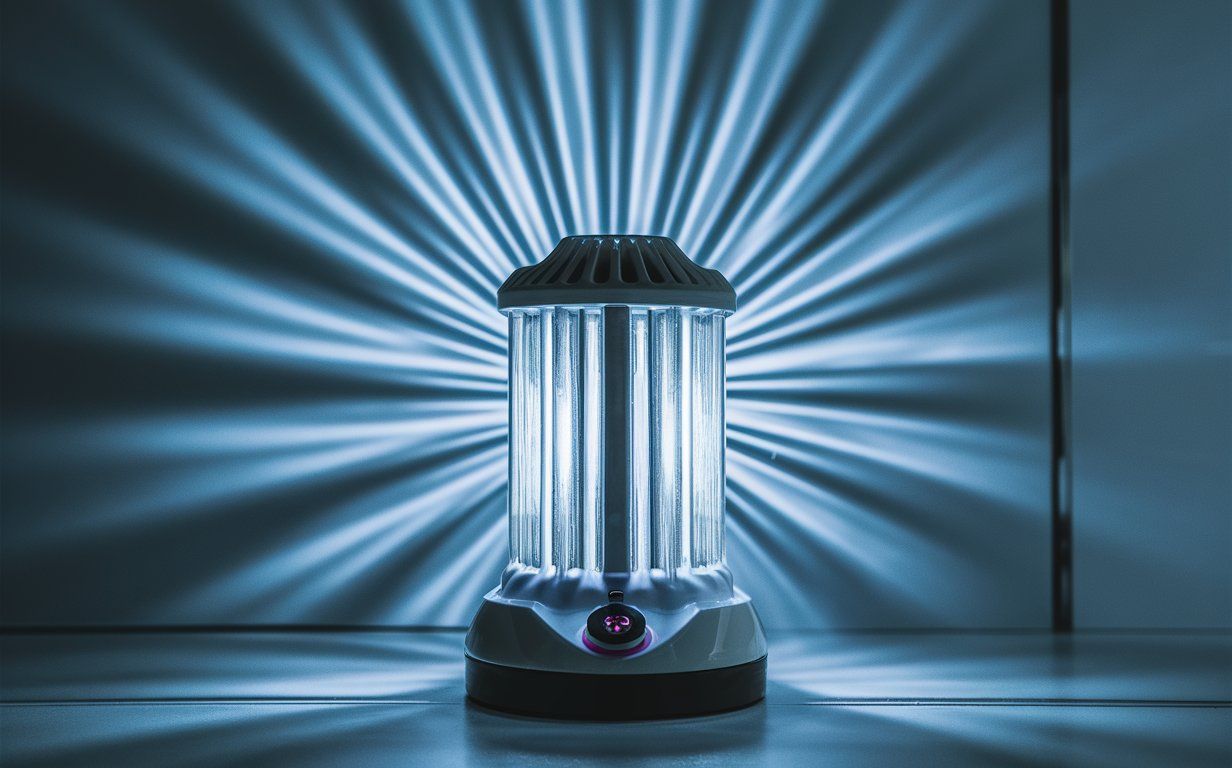Follow us on Google News (click on ☆)

The low cost and ease of use of mercury lamps, which emit at 254 nm, have played a crucial role in the widespread adoption of UV disinfection technology. However, these lamps have several disadvantages, including short lifespan, slow startup, and the risk of toxic leaks. Moreover, they emit radiation that can potentially cause cancer and cataracts.
Given these challenges, research is shifting towards far UV-C lamps around 230 nm, as this spectral range is less harmful to skin and eyes. However, the performance of current UV LEDs is inadequate, particularly as the wavelength shortens.
An alternative to LEDs are lamps utilizing electron beams emitted from a cold cathode, which injects electrical power into the semiconductor [1]. Unlike LEDs, this technology does not require doping or semiconductor contact. Thus, devices integrating electron beams and using AlGaN quantum boxes as the active material have seen significant advancements for enhanced efficiency and power. These quantum boxes boost performance due to their high efficiency.

Figure 1
(a) Scanning electron microscopy image of two layers of AlGaN quantum boxes. The arrangement of quantum boxes is compact, with a height of about 1 nm and a base diameter of 5-7 nm.
(b) Schematic description of the targeted UV-C lamp, containing the semiconductor with AlGaN quantum boxes, and the cold cathode in a vacuum envelope.
Researchers from CEA-Irig, in collaboration with the Institut Lumière Matière (University of Lyon), Institut Néel in Grenoble (CNRS), and CEA-Léti, have developed UV lamps including AlGaN quantum boxes.
Within ultra-high vacuum chambers, the researchers precisely adjust the growth parameters via molecular beam epitaxy for these boxes in the UV range of 230 to 270 nm (Figure 1). The quantum boxes achieve a quantum efficiency of about 50% across the entire spectral range. Additionally, they deliver energy efficiencies surpassing those of AlGaN LEDs within the 230 nm spectral window (Figure 2) [2].
In summary, this research marks an important milestone in the development of sources for effective and safe UV-C disinfection. The advancements involve a narrower spectral selection [3] and improved efficiency in light extraction. Furthermore, new designs for UV disinfection lamps incorporating a cathode producing several milliwatts of current for increased lifespan are currently under study.

Figure 2
Emission spectra from cathodoluminescence (CL) of quantum box samples with different aluminum concentrations in the boxes.
References:
[1] Cuesta S, Harikumar A and Monroy E.
Electron beam pumped light emitting devices.
Journal of Physics D: Applied Physics 2022.
[2] Cañas J, Harikumar A, Purcell S T, Rochat N, Grenier A, Jannaud A, Bellet-Amalric E, Donatini and Monroy E.
AlGaN/AlN Stranski-Krastanov quantum dots for highly efficient electron beam pumped emitters: The role of miniaturization and composition to attain far UV-C emission.
ACS Photonics 2023.
[3] Cañas J, Rochat N, Grenier A, Jannaud A, Saghi Z, Rouvière JL, Bellet-Amalric E, Harikumar A, Bougerol C, Rigutti L and Monroy E.
Effect of extended defects on AlGaN QDs for electron-pumped UV-emitters.
ACS Nano 2024.